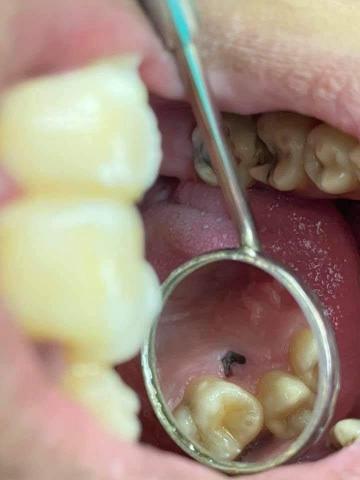Dentures That Feel Natural, Look Beautiful.
The Secret to Natural-Looking Teeth That Most Dentists Won't Tell You
Severity:
Teeth Problems:
Beyond the Perfect White: The Art and Science of a Truly Natural Smile
You’ve made the decision. You're investing in your smile, ready to transform your teeth into the confident, radiant version you’ve always wanted. Like many Filipinos who are taking this exciting step, you’ve probably started by thinking about one thing: shade.
"Doc, I want the whitest, brightest A1 shade!"
It’s a common starting point. But what if we told you that choosing the right shade from a guide is only the first, tiny step? What if the secret to a smile that doesn’t just look "done," but looks naturally, brilliantly yours, lies in something much deeper?
The real secret isn't on the surface—it's in understanding the optical magic of your natural tooth.
The Hidden Architecture of a Natural Tooth
Think of a natural tooth not as a single, white block, but as a beautifully layered, translucent structure. Its incredible vitality comes from the interplay between two key layers:
-
Dentin: The inner core of the tooth. It’s opaque and provides most of the tooth's color and warmth.
-
Enamel: The outer shell. It’s a translucent layer that wraps over the dentin, controlling how light enters, reflects, and refracts within the tooth.
A "fake-looking" restoration happens when we ignore this architecture. A truly realistic one perfectly replicates it. So, how do we do that? Let's break it down by zone, just like an artist building a masterpiece.
The Blueprint for Realism: Mapping the Tooth Zones
To create a lifelike tooth, we don't use one color. We use a combination of materials and shades to reconstruct each functional and optical zone.
1. The Gingival Zone (The Warm Neck of the Tooth)
This is the area closest to your gums. Notice how it's often warmer and more saturated in color? That’s because the dentin layer here is thick, and the enamel covering it is very thin.
-
The Secret: To replicate this depth and natural warmth, we use a higher-chroma (more saturated) dentin shade, like an A3 or A3.5. This prevents the cervical area from looking artificially light and "lifeless," ensuring it blends seamlessly with your gum line.
2. The Body Zone (The Tooth's Personality)
This is the main body of your tooth, representing its foundational color. Here, we find a perfect balance—the dentin’s opacity meets the enamel’s translucency, creating a lively, complex appearance.
-
The Secret: We typically use a core dentin shade like A2 to establish the base color. Then, we layer a medium-opacity enamel over it. This mimics the natural light interaction, giving the tooth body its signature depth and vitality, rather than a flat, painted-on look.
3. The Incisal Zone (The Lively Edge)
Look at the biting edge of a natural tooth. See how it’s not solid white, but has a beautiful translucency, often with a faint, shimmering "halo"? This is where the dentin layer ends, and we’re left with almost pure enamel.
-
The Secret: This is where the magic of light play happens. We use translucent and opalescent enamel masses to rebuild this area. These special materials capture and bend light, recreating that natural, semi-transparent edge and the delicate incisal halo that makes a smile dynamic and alive.
The Final Touch: The Shape of Light
Even with perfect internal colors, a tooth can still look artificial if the surface is wrong. This is where Vertical Lobes come in.
These are the gentle, vertical ridges on your teeth that are a remnant of how the tooth developed. They are nature's way of sculpting light.
-
The Secret: During the final contouring and polishing, we meticulously preserve and enhance these lobes. A flat, featureless surface reflects light in a dull, uniform way. A properly contoured surface, with its subtle textures and lobes, creates a dynamic play of light and shadow, giving your restoration a natural vitality that shines in any lighting.
The Takeaway: It's Not Just Color, It's Optics
So, is it just about choosing the right shade? No. The journey to a perfect smile is about much more.
Real beauty lies in replicating the optical structure of the tooth.
By strategically distributing dentin for warmth, enamel for translucency, and mastering the surface texture, we don’t just give you a new tooth. We give you a restoration that is visually stable, dynamically beautiful, and indistinguishable from nature's own work. It’s a smile that doesn’t announce itself as "dentistry," but simply as a naturally beautiful part of you.
Ready to explore how we can create a uniquely natural smile for you? Schedule a consultation with us today to discuss the art and science behind your new smile!





